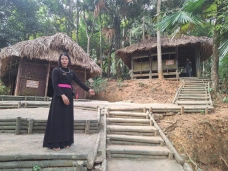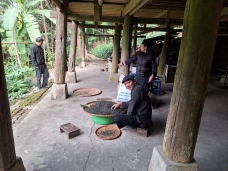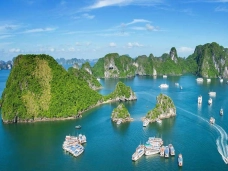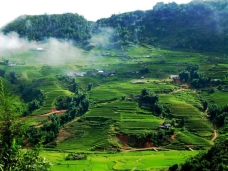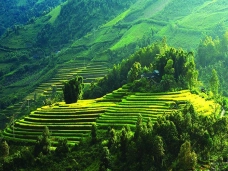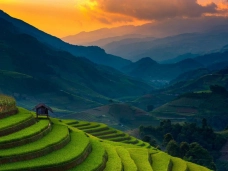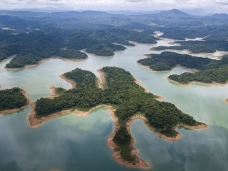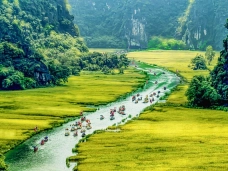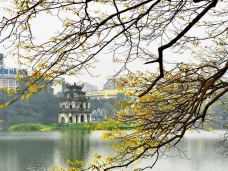Sapa - People and Nature
22-03-2024 16:26
Location
Highlight Image
Sapa, a town situated on the rocky highlands of Northern Vietnam, is one of the most famous tourist destinations in Lao Cai province. Known for its majestic natural landscapes and the rich culture of its ethnic minorities, Sapa is not just a place for exploration but also a confluence where humans and nature meet.
History of Sapa
Discovered by the French in 1903, Sapa quickly became a resort town during the colonial era, thanks to its cool climate and stunning mountainous landscapes. After 1945, Sapa became a significant tourist spot in Vietnam, attracting millions of visitors each year to explore the diverse culture and spectacular nature of this highland region.
Nature and Culture
Sapa is blessed with the spectacular scenery of mountain ranges like Hoang Lien Son and the peak of Fansipan - the roof of Indochina. The rocky terrain and red maple forests in Sapa provide ideal conditions for mountain climbing, trekking, and exploring nature. The rich flora and fauna, including many endemic species, are highlights of the region.
Sapa's culture is a blend of the cultural traits from ethnic minorities such as the H'Mong, Dao, Tay, and Giay. Each ethnic group has its own customs, practices, and festivals. Visitors can witness this cultural diversity through traditional festivals, colorful costumes, and daily activities like brocade weaving.
Destinations
Fansipan Mountain: An unmissable destination with a cable car that takes visitors to the highest peak in Indochina, offering a panoramic view of majestic Sapa.
Muong Hoa Valley: Known for the ancient rock field of Sapa with mysterious carved stones, combined with serene natural scenery, it is an ideal spot for those who love long walks.
Cat Cat Village: A village of the H'Mong people, showcasing traditional life and opportunities to learn about brocade making, carving, and other handicrafts.
Cuisine of Sapa
The cuisine of Sapa is a unique blend of the culinary cultures of the ethnic minorities in the area, particularly the H'Mong, Dao, Tay, and Giay. The dishes here not only reflect the characteristic flavors of the Northwestern mountains but also demonstrate a close connection with nature and the local way of life. Below are some typical dishes that you should not miss when visiting Sapa:
Thắng cố is a traditional dish of the H'Mong, made from various meats (usually horse meat), organs mixed with distinctive spices like cardamom, anise, cinnamon, and chili. This dish is typically cooked in a large pot and shared during festivals or offered to honored guests.
Cơm lam is a rustic dish made from glutinous rice stuffed into young bamboo tubes, added with a little water, then grilled over a charcoal fire. Cơm lam has a fragrant bamboo smell, a chewy texture of sticky rice, usually served with sesame salt or grilled meat.
Cap nach pork is a small pig breed raised free-range in the forests of Sapa. This pork is very delicious and firm, often prepared in various dishes such as grilled, stir-fried, or made into sausages. Grilled cap nach pork is a favorite among tourists in Sapa.
Although not a native specialty, farmed salmon has become a famous dish in Sapa due to the cold climate conditions similar to those in countries with developed salmon farming. Sapa salmon can be prepared in dishes such as grilled salmon, smoked salmon, or sashimi.
Bitter bamboo and other wild vegetables are common ingredients in the meals of the ethnic minorities in Sapa. They not only provide a rich source of vitamins and minerals but also enhance the flavor of many dishes, offering tourists a unique culinary experience close to nature.
Corn wine is a popular beverage among Sapa locals, fermented from corn and an essential part of festivals or when hosting guests. The wine has a robust and somewhat strong flavor, reflecting the rustic but warm lifestyle of the people here.
Festivals in Sapa
The Tet Nhảy festival is one of the most important festivals of the Red Dao people in Sapa, usually held on the first and second days of the Lunar New Year. The festival includes many activities such as lion dancing, stick dancing, and folk games. This is an occasion for everyone to pray for health, luck, and a prosperous new year.
The Roóng Poọc festival is a traditional festival of the Giay people, taking place in January or February each year. The festival aims to thank the gods for blessing the community with a fruitful year and a happy life. Activities during the festival include offerings, dancing, and sports competitions.
The Gầu Tào festival is one of the unique cultural aspects of the H'Mong people, usually held in January. It is an occasion for the H'Mong to pray for peace, a bountiful harvest, and to ward off evil spirits. The festival features many complex and unique rituals, including traditional dances and ceremonial offerings.
The Cloud Hunting festival is not a traditional festival but has become a popular event that attracts tourists to Sapa. This event takes place on weekends and at times when the weather is conducive to cloud viewing—typically during the cold season from September to April. Visitors have the opportunity to experience the incredible feeling of standing on high mountain peaks and looking down on a sea of swirling clouds.
The Rain Praying Festival of the Tay people is held in the spring, as the community begins a new planting season. The festival includes rituals praying for favorable rains and successful crops. It is a time for the Tay to express their gratitude to the deities and nature for their blessings.
Sapa is not only a beautiful land but also a place where people and nature blend not only in scenery but also in lifestyle and culture. The combination of natural beauty and rich cultural identity makes Sapa an irresistible attraction, making it a favorite destination for both domestic and international tourists.
Similar destination
14-04-2024
Hạ Long - A World Natural Heritage
22-03-2024
Moc Chau, Son La Province
22-03-2024
Mai châu - Hòa Bình
22-03-2024
Dien Bien - History and Culture
22-03-2024
Thanh Hóa Province – Culture and History
22-03-2024
Ninh Bình – History and Culture
22-03-2024






